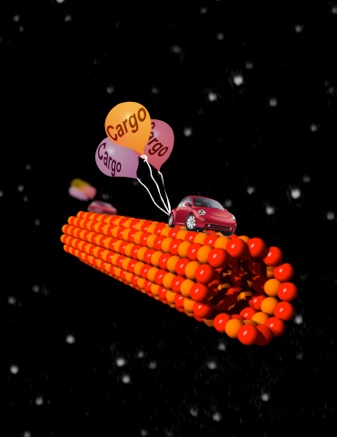What are molecular motors?

The Oxford English Dictionary defines motor as “A person or thing which imparts motion... The initiator of something... A machine which imparts motion.. A source of power, energy, etc.; a driving force... Any agent or force acting on a body to produce motion.” (“motor” OED Online).
Image from: http://thenaturalhistorian.com/2012/08/03/isaac-newton-mosaic-account-of-creation-burnet-theory-earth/
As we know from Newton’s first law, If the net force on an object is zero, then its velocity is constant. The object is either resting with a velocity of zero or traveling in a single direction at constant velocity (Knight). In terms of our world, this law means that if we wish to create motion where there was none before we need an initiator. As the above definition suggests, a motor can be our initiator.
Humans have relied on machines for millennia. The have ground grain for our bread, carried us from place to place, printed written words for distribution to millions, and sent packages of electronic data instantaneously across continents. Often humanity is self-congratulatory about its command of machines, perceiving our ability to create mechanical devices as a triumph over nature.
What we have only come to appreciate in recent years is that we ourselves are made up of nanomachines, more intricate and efficient than any we have yet been able to construct. Science Journalist Karl Leif Bates notes that, “Biology has been using these little machines and motors to operate living cells for millions of years: in bacteria that swim by spinning their hairlike propeller; in the little levers that pull our muscle fibers tight; and in even smaller rotary motors on the surface of mammalian cells that turn in response to a single proton of electrical current” (Bates).
Maybe the most interesting proteins found in nature are motor proteins. These proteins attach to a “Polarized cytoskeletal filament” and then perform ATP hydrolysis, using the energy produced to move along the filament (Alberts). These motor proteins can act like railcars moving cargo including mitochondria, Golgi apparatuses, or secretion vessels. Below is an artist’s interpretation of a motor protein, depicted here as a Volkswagon Beetle.
Image from: http://valelab.ucsf.edu/external/images/res-kinesin-new/beetlemotor-cargo_bg.jpg
The physical process by which the motor protein generates movement is mechanochemical, a “Cycle of filament binding, conformational change, filament release, conformational relaxation, and filament rebinding” (Alberts). Through this process motor proteins are able to transport cargo along filaments, contract muscles, and power the motion of structures such as flagella or cilia.
There are three classes of motor proteins: Kinesins, Dyenins, and Myosins. Each class includes a variety of different proteins, but members of a class share the same general structure. The next sections will examine each of these structures in detail.


